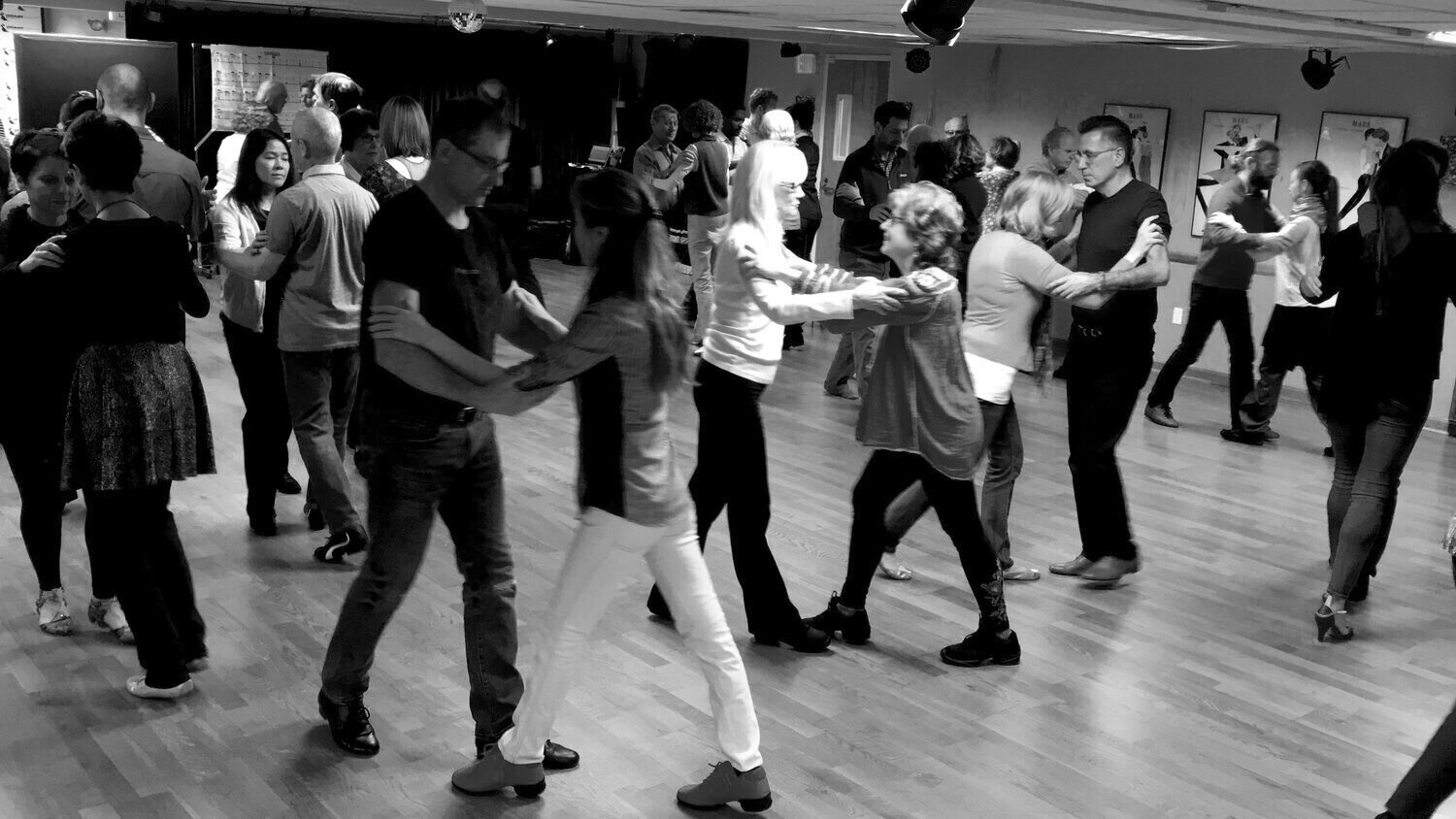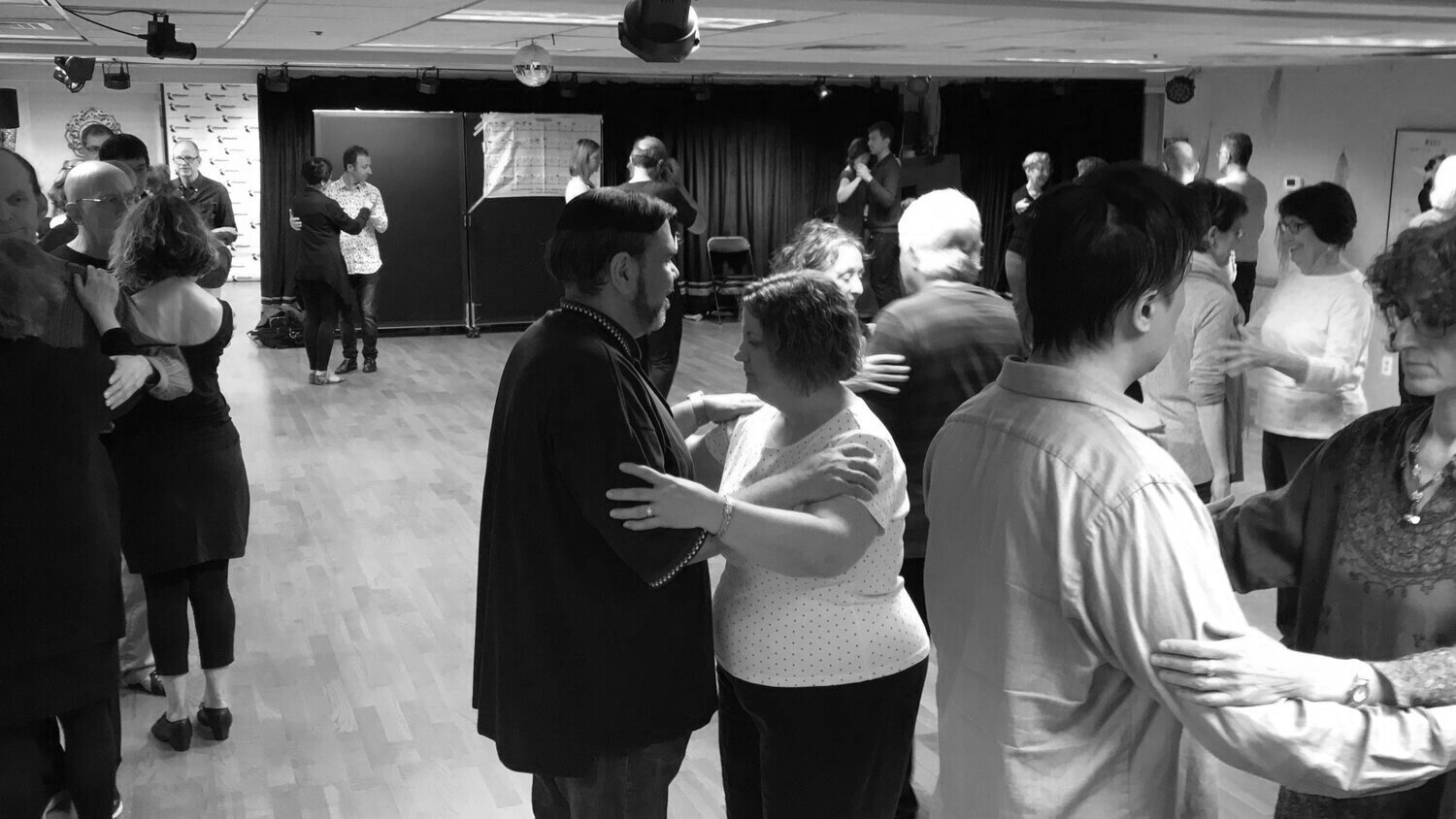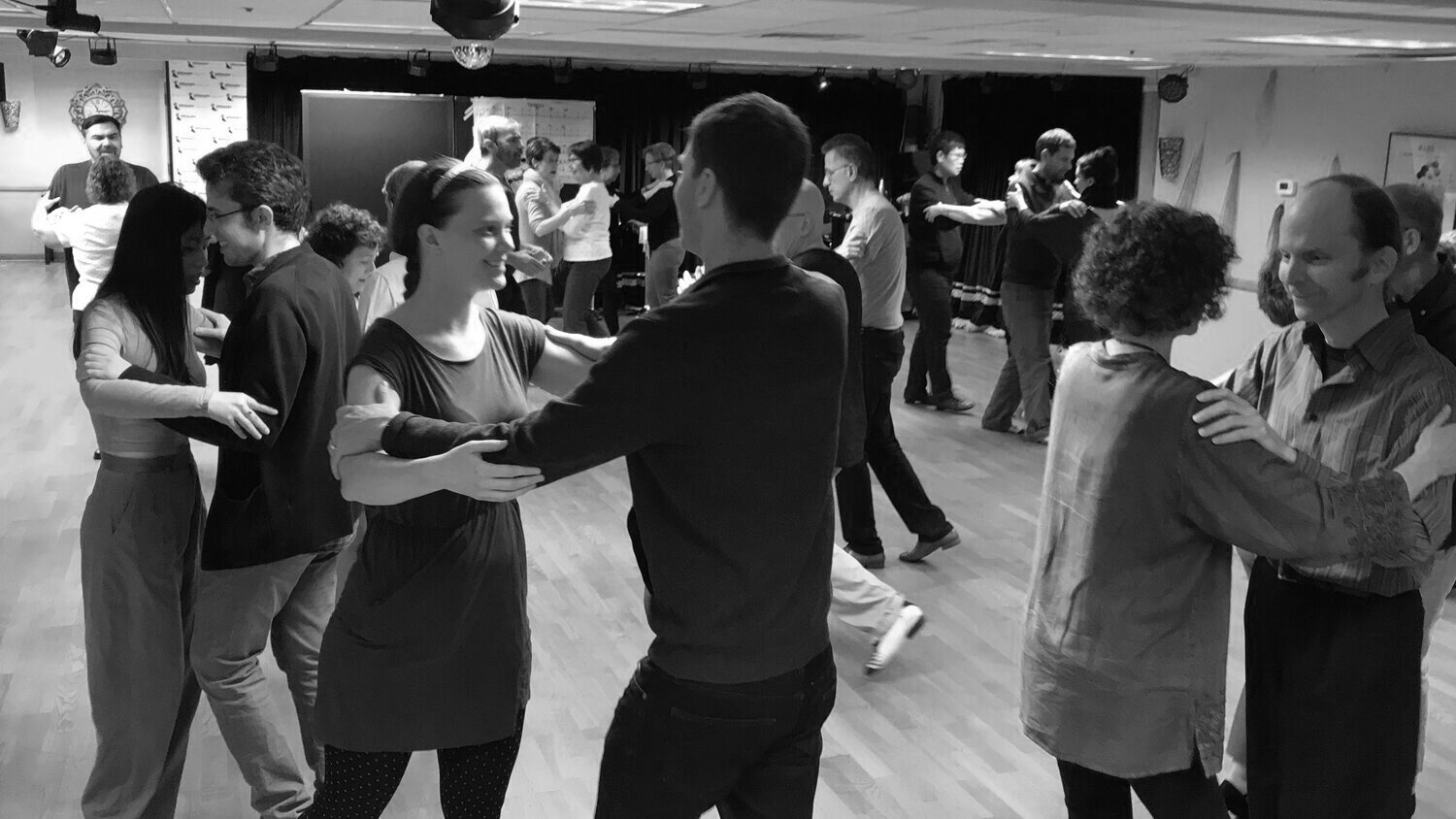Basic 8 Count to the Cross: Fundamental Step of Argentine Tango — the Mystery Solved
The Basic 8 Count, also referred to as the 8 Count Basic, is one of the most fundamental steps taught in Argentine tango.
If one is studying tango as a beginner, it is more than likely that one will encounter the Basic 8 Count to the Cross. While there are no predefined steps in tango since it emphasizes the importance of improvisation, this sequence of the Basic 8 Count to the Cross will still come up as one of the first lessons.
This must-see video for beginners by Anita and Hernan demonstrates the fundamental steps and torsions, including the 8-basic count to the cross at 1:23.
A post from Endre Tango gives a summary of the steps of the Basic 8 Count to the Cross:
● Step 1: The leader takes a step back. However, it is recommended to ignore this step as the leader is at risk of colliding with others since they cannot see behind them. You can also take the step towards the center of the dance floor avoiding the direct movement backwards and executing it at 45 degrees.
● Step 2: The side step or “salida” is usually done towards the center of the dance floor.
● Step 3: The leader steps on the outside of the follower.
● Step 4: Forward step in preparation for the cross.
● Step 5: The follower completes the cross step as the leader closes his feet.
● Steps 6, 7, and 8: These steps terminate the sequence.
Step 5, also typically called Position 5, is perhaps the most iconic step in this sequence and arguably the most complicated to do for a beginner.
After all, for a follower to execute a successful cross, one must be aware of timing, the subtle cue from the leader, the proper adjustment of torsion, where and when to shift one’s weight, and the track wherein the foot must be placed after completing the cross. All of these must be considered simultaneously lest the dancer’s movement ends up being stilted or they end up twisting in the wrong direction.
But as much as the cross has been part of the Basic 8 Count, many are unaware that before the beginning of the Second World War, the cross did not exist in this sequence. A story from The Art History of Love by Robert Farris Thompson recounts an anecdote from Mingo Pugliese in which the latter saw the cross position sometime in 1938. This suggests that until then, there had been no record of the cross being done in the Basic 8 Count sequence.
Was there a cross or wasn’t?
In Tango Secrets, the conference about METHODOLOGY & PHILOSOPHY OF ARGENTINE TANGO, we asked the question about the basic to the cross and also about cross-system to many professionals. There was not really a unified answer. however - a few interesting thongs came out.
One of them is that the traditional Tango was mostly danced with the cross feet. that’s right! Cross-system came BEFORE the parallel. And that kind of confirms that the basic 8 count to the cross is a later invention. Why? - Because it is totally on a parallel system!
The Story Behind the Cross Step
Interestingly, this story is tackled by Gustavo Benzecry Sabá in the YouTube channel Tangomilonga. In this video, Gustavo tells of an accident that led to the development of the cross step in the Basic 8 Count thanks to dancers José "El Vasquito" Orradre and his practice partner Recalde. With the discovery of the cross step, pre-existing forms were consequently revolutionized from then on.
There is a considerable back story that Gustavo mentions in the video, which offers a richer and more nuanced description of the time the cross step was discovered by accident. What is important to remember, though, is that this occurred around the 1930s and, back then, thousands of young people were attending practicas with the objective of discovering movements and developing steps and tango figures. They would do it either alone or with their companions.
In those days, Buenos Aires was so rife with social and sports clubs that there were at least four or five present in every neighborhood. Gustavo describes these clubs as “factories of talents waiting to develop.”
Enter José "El Vasquito" Orradre and his dance partner, a certain Recalde, who like many young people back then, dedicated themselves to dancing tango by entering practices. Gustavo explains how the cross step was discovered:
“So, according to some testimonies, one of those days in 1938, during practice at one of those clubs, Vasquito forced his partner Recalde to go backwards and, since he saw that there was no place, he chose to cross the road left leg on the right, inventing this position that today seems typical of the female role — a movement that was called ‘Sobrepaso’ for some and ‘Contrapaso’ for others. A rarity, because the steps had no names in those years. That would appear some time later. But the point is that at that precise moment, this couple found a unique position — a revolutionary crossover. And since there wasn't much more room, they ended up with what we now know as steps 6, 7, and 8 of the basic step. The last three steps are known today as rotated resolution or closing steps.”
Carlos Estévez, also known as Petróleo, was said to be the one who saw the possibilities of the crossing around this time. His account is supported by some documentation, such as the book Tango y Rumba published in 1938.
In this book (1938), there is a figure of a woman who puts her feet together and leaves the weight on her left foot. This suggests that until that year, the cross step had not yet been discovered or considered as a possibility.
Over time, the cross step, as Gustavo concludes in this video, would “determine the creation of some ornaments, favoring balance and understanding the location of the bodies in a different way. Without going any further, he would make the woman face the leader perfectly. Over time, that crossing was perfected until the woman made that movement an expression of sensuality and beauty. [...] So today we can well thank Vasquito Orradre and Recalde, two anonymous faces, for completely changing the way of dancing and for making us see that sometimes a small accident can produce a revolutionary advance.”
Gabriel Folques, author of Las Tablas del Tango, explains the cross during Tango Secrets Summit.
A Happy Accident or an Established Presence?
Interestingly enough, Gloria y Eduardo Arquimbau had an interesting take on Tangomilonga’s YouTube video recounting the anecdote about Vasquito Orradre and Recalde.
For those who may be unaware, Gloria and Eduardo Arquimbau are considered well-known and well-respected tango dancers and pioneers who, according to their website The Tangueria,
They “were also instrumental in regenerating tango in Argentina and bringing it into the homes of everyday Argentineans through Buenos Aires television stations from 1962 onwards.
Their enormous talent carried them throughout the world. not only as exceptional performers but also as choreographers, in the tango shows Tango Argentino and Forever Tango during the 1980s and 1990s. They performed with many of the famous and respected tango orchestras such as Canaro, Pulgliese, DiSarli, Troilo, and Piazzola. For more than 60 years, Gloria and Eduardo taught the world how to dance and love tango, and it was through tango that they ascended the world.”
In Eduardo Arquimbao’s comment, he notes that Gustavo’s story is interesting but mentions that…
“[tango] is only one and it has always been the same since its birth.”
He further states that the cross position first appeared sometime in the 1940s with the change of the position of the bodies. He notes that,
“Previously it [the cross position] was danced with the bodies more open and the woman stepped forward. Both danced sideways. When the woman began to walk backwards, it’s at that moment that the crossing appeared, which was the leg that normally passed in front. This was not invented by anyone — customs change and bodies adapt. That's how tango is.”
Whether it was discovered by chance or has always been present in this sequence, the Basic 8 Count remains a fundamental step in teaching tango to beginners.
Some Ongoing Debates Regarding the Basic 8 Count
There has been some ongoing debate about how this particular sequence should be taught. While this varies from one teacher to another, there are those who question whether the back step should be included in lessons. Similarly, there are those who argue that
the Basic 8 Count to the Cross is not an appropriate sequence to be taught to beginners for a number of reasons.
For instance, a post from the Max Planck Institute for the Physics of Complex Systems notes that while teachers consider this eight-step sequence basic, it, unfortunately, “leads beginning tango dancers to mechanically do this sequence over and over, without any regard for the music or the obstacles on the dance floor.” It suggests varying the sequence by adding one or more two-step walks to keep dancers from developing this bad habit.
A post from TangoClay also sites eight reasons that explain why the Basic 8 Count might not be appropriate for beginners:
● It is difficult to execute
● Misleads couples into thinking they know how to dance tango
● Doesn’t encourage good lead and follow
● Stifles improvisation
● Causes beginners to drift to the center of the dance floor
● Cannot be used in a crowded milonga
● Stifles musicality
● Rarely used by good social dancers in milongas (As a full sequence that is. The cross itself is used all the time)
On the other hand, a post from Black Alert offers a variation of the Basic 8 Count that may be more suitable for use in milongas. The post explains what it calls the Useful 8 Count Basic:
“Put simply, it is a modification and goes further by actually adding variations on a theme. The modification has to do with orientation and then actual rotation; that
if you modify the orientation of certain steps and you rotate the resulting steps in certain ways, then the 8 Count Basic becomes more than useful.
It’s actually a lot of fun in nearly any embrace that you can come up with (including the Berlin Embrace)! Not only that, there’s a possible surprise at the end that you weren’t expecting that’s sitting there!”
The Basic 8 Count’s first step, which is a backward step, is the one often being criticized as unsuitable for crowded milongas.
This is because taking a step backward on a packed dance floor may lead to accidents since the leader might not be able to appropriately gauge their distance between the other dancers close by. However, an easy solution for the back step is to either completely disregard it, do only a small one. or redirect it towards the center of the dance floor! A one example of this is a video by Howcast, where the leader’s sequence for the Basic 8 Count begins with only a small back step.
Is the Basic 8 Count to the Cross Necessary?
Despite the ongoing debates, the Basic 8 Count is still largely considered a fundamental step in Argentine tango. In fact, many of those who helped explain the structure of tango, such as Gustavo Naveira and Los Dinzel among others, were able to discover new techniques and methodologies using the Basic 8 Count sequence.
Similar to other art forms, one cannot truly appreciate Argentine tango without a deep understanding of the fundamental steps that make up its figures.
While the dance itself often highlights improvisation, precision is still necessary to achieve elegant movements and beautiful embellishments.
In fact, knowledge of the fundamental steps is what makes revolutionary discoveries possible, as evidenced by the story of Vasquito Orradre and Recalde.
Without their constant practice, they might not have chanced upon the cross step, which has made a mark on how tango is danced today.









